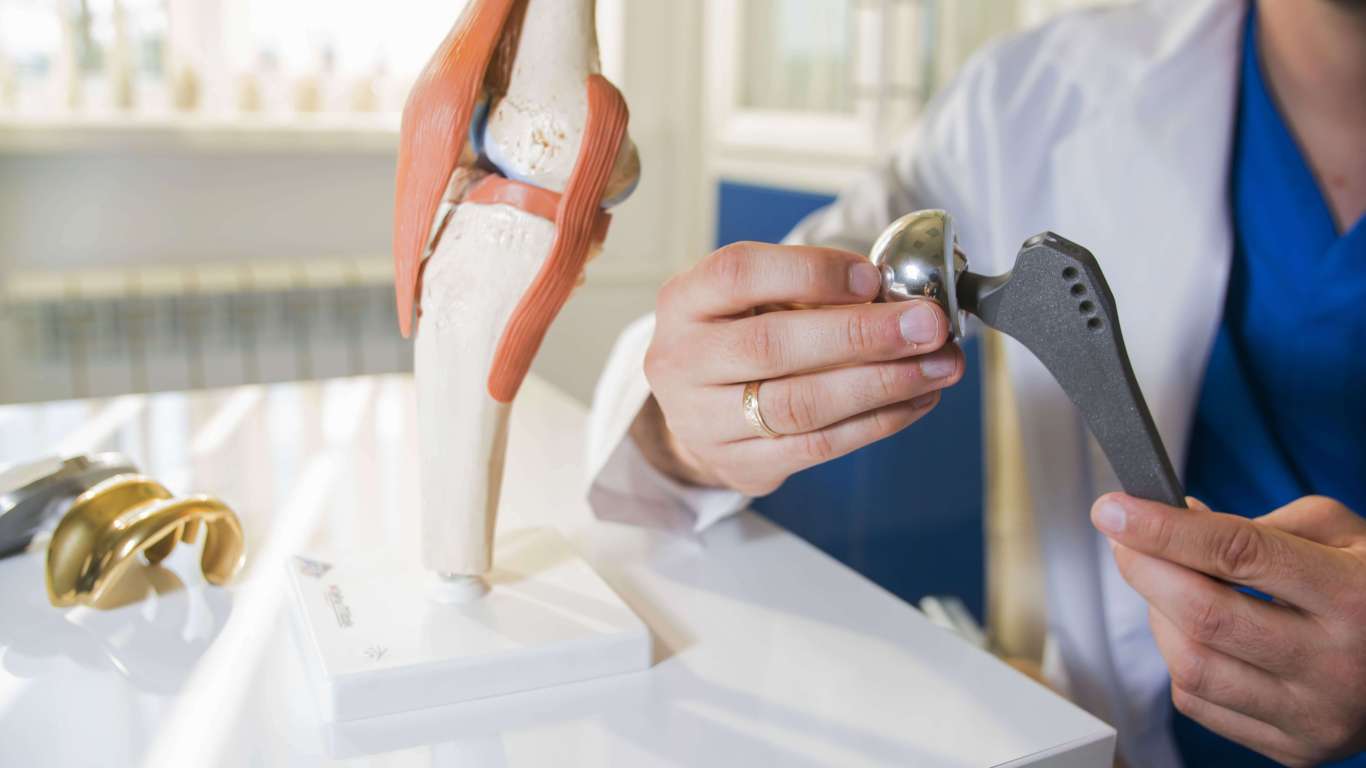According to our new market research study on “The global Orthopedic Implant Antibacterial Coatings Surface Treatment Market Forecast to 2028 – COVID-19 Impact and Global Analysis – by Type, Material Type, and Geography,” the market is expected to reach US$ 178.55 Million by 2028 from US$ 87.15 Million in 2021; it is estimated to grow at a CAGR of 10.8% from 2021 to 2028. The report highlights the trends prevailing in the market, along with the market drivers and deterrents. The rise in the prevalence of implant-associated infections and technological advancements in antibacterial coatings is driving the market. However, the high cost of implants with an antimicrobial coating is hindering the market growth.
Bacterial infection and infection-induced immune responses have become a life-threatening concern Among patients undergoing orthopedic implant surgery. Biocontamination of conventional biomaterials causes bacterial invasion in injured areas, resulting in postoperative illness. As a result, anti-infection and immune-evasive coatings for orthopedic implants are desperately needed. There is an increase in demand for orthopedic implants such as screws, plates, nails, and artificial joints from hospitals for orthopedic surgery. Moreover, there is a rise in demand for coating the implants with an anti-biofouling polymer, which prevents bio substances and bacteria from adhering onto the surface.
Implant-associated infections result from various factors, including antibacterial prophylaxis, bacterial load, microorganism and host’s type, surgical procedure and technique, and type of implant. The increasing prevalence of implant-associated infections is one of the prominent factors driving the orthopedic implant antibacterial coatings surface treatment market.
For instance, as per the study reported by the Journal of Orthopaedic Surgery and Research in 2018, the prevalence of implant-associated infections in orthopedic trauma patients was found to be in the range of 5 to 10%. Each year, 750,000–1,000,000 implant-associated infections cases are found in the US, and the government needs to spend more than US$ 1.6 billion to cover the expense of the excess hospital charges due to implant-associated infections. Especially with the widespread use of orthopedic implants, the number of infected implants was continued to increase. Even if the infected implants can be successfully removed by secondary surgery, the functionality of the limb and the fracture healing may be limited, which may eventually lead to fatal surgical operations such as amputation, joint arthroplasty, or arthrodesis. Therefore, the high epidemiology of implant-associated infections generates the demand for appropriate implant antibacterial coating treatment, which will support the market’s growth.
The demand for the orthopedic implant antibacterial coatings surface treatment has been rising because of the heavy incidence of prosthetic joint infection (PJI). PJI is the most serious complication following total joint arthroplasty. According to an article published in Annals of Joint 2021, the estimated cost of treating PJI in the US alone is US$ 1.62 billion. The incidence of PJI varies with the joint involved. According to the study, total knee arthroplasty, total hip arthroplasty, and total shoulder arthroplasty have reported incidences of 0.25% to 2%, 0.5% to 1%, and less than 1%, respectively. Around 23 to 25% of revision total knee arthroplasty procedures and 12 to 15% of total hip arthroplasty procedures are performed for PJI.
Get a Sample Copy of the Report@ https://www.theinsightpartners.com/sample/TIPRE00017477/
Moreover, according to the investor’s presentation published by aap Implantate AG, in 2020, in orthopedic trauma, it has been estimated that up to 30% of cases may result in infection. Similarly, fracture-related infection (FRI) is a severe complication after bone injury and can pose a serious diagnostic challenge. According to the Federal Statistical Office of Germany (Destatis), the prevalence of FRI increased by 0.28 from 8.4 cases per 100,000 inhabitants to 10.7 cases per 100,000 inhabitants between 2008 and 2018. Hence, the increasing prevalence of orthopedic implant-associated infections will increase the demand for orthopedic implant antibacterial coatings surface treatment.
Based on type, the global orthopedic implant antibacterial coatings surface treatment market is segmented into passive surface finishing/modifications (PSM), active surface finishing/modifications (ASM), and peri-operative antibacterial local carriers or coatings (LCC). In 2020, the active surface finishing/modifications (ASM) segment held the largest share of the market. Furthermore, the same segment is expected to register the highest CAGR in the market during 2021–2028. ASM involves the application of pharmacologically active antibacterial agents or compounds like antibiotics, antiseptics, metal ions, or organic molecules on the surface of orthopedic implants. Such pharmacologically activated coatings on implant surfaces may change the implant from a passive or pharmacologically inert medical device to a drug-loaded medical device. Companies such as DOT GmbH and Harland Medical Systems, Inc. provide antibacterial coatings surface treatment, which is expected to drive the market during the forecast period.
Health care systems are overburdened due to the COVID-19 pandemic, and the delivery of medical care to all patients has become a challenge worldwide. As the COVID-19 pandemic continues to unfold, medical device companies are finding difficulties in managing their operations. Many companies offering products for orthopedic implant antibacterial coatings surface treatment have their business operations in the US, and their business is adversely being negatively affected by the COVID-19 pandemic. This pandemic has disrupted the product distribution, as well as resulted in temporary closures of company facilities. For instance, as per the British Journal of Surgery published in May 2020, orthopedic procedures were affected the most, with 6.3 million operations canceled worldwide due to the pandemic. Moreover, cancellations of elective surgeries to reduce exposure to COVID-19 in the hospital and operating rooms into intensive care units have hampered the growth of the orthopedic implant antibacterial coatings surface treatment market. However, in 2021 as the new COVID-19 cases are going down the as the situation is recovering thus, the market is expected to grow in upcoming days.
The key players operating in the orthopedic implant antibacterial coatings surface treatment market include DOT GmbH; Covalon Technologies Ltd.; Sciessent LLC; Harland Medical Systems, Inc.; Isoflux, Inc.; Allvivo Vascular, Inc.; aap Implantate AG; BASF SE; Agienic Inc.; and ARAN BIOMEDICAL. Companies are adopting organic and inorganic growth strategies to sustain their position in the orthopedic implant antibacterial coatings surface treatment market. In March 2020, Covalon Technologies Ltd. launched its breakthrough antimicrobial technology called CovaGuard, formulated to kill the COVID-19 virus (or “SARS-CoV-2”) and other viruses, bacteria, and pathogens and provide continuous protection by trapping and deactivating microbes over an extended period. CovaGuard can be safely applied on the skin and protective medical equipment.
The global orthopedic implant antibacterial coatings surface treatment market is segmented into type, material type, and geography. In terms of product, the market is segmented into passive surface finishing/modifications (PSM), active surface finishing/modifications (ASM), and peri-operative antibacterial local carriers or coatings (LCC). Based on material type, the orthopedic implant antibacterial coatings surface treatment market is segmented into metallic coatings and non-metallic coatings. In terms of geography, the market is broadly segmented into North America, Europe, Asia Pacific, the Middle East & Africa, and South and Central America.
About The Insight Partners
The Insight Partners is a one-stop industry research provider of actionable solutions. We help our clients in getting solutions to their research requirements through our syndicated and consulting research services. We are specialist in industries such as healthcare, media, and telecommunication.
Our research model is very simple. We Believe in client servicing and delivering the best quality to our customers. Through our research content, we are making sure that our customers get value for their money along with better quality data and analysis.
Our research content is majorly focused on market trends in terms of market sizing, competitive landscaping, company analysis, regional or country analysis, etc. We provide a detailed break-up of segmentation in terms of geography, systems, products, and services, etc., which helps our clients to gain a deeper analytical understanding of various research topics.
Contact Us
If you have any queries about this report or if you would like further information, please contact us:
North America: +1 646 491 9876
Asia Pacific: +91 20 6727 8686
Email: [email protected]



